When it comes to the gym, the standard width of a bench plays a crucial role in ensuring optimal performance and comfort, particularly during exercises like the bench press. The dimensions of the bench not only impact the ergonomics of the workout but also contribute to safety and proper form. Understanding the standard width of the bench used in the gym is essential for athletes, fitness enthusiasts, and gym owners alike.
In this article, we’ll delve into the key dimensions and considerations surrounding the standard width of gym benches, providing valuable insights for maximizing comfort and effectiveness during workouts.
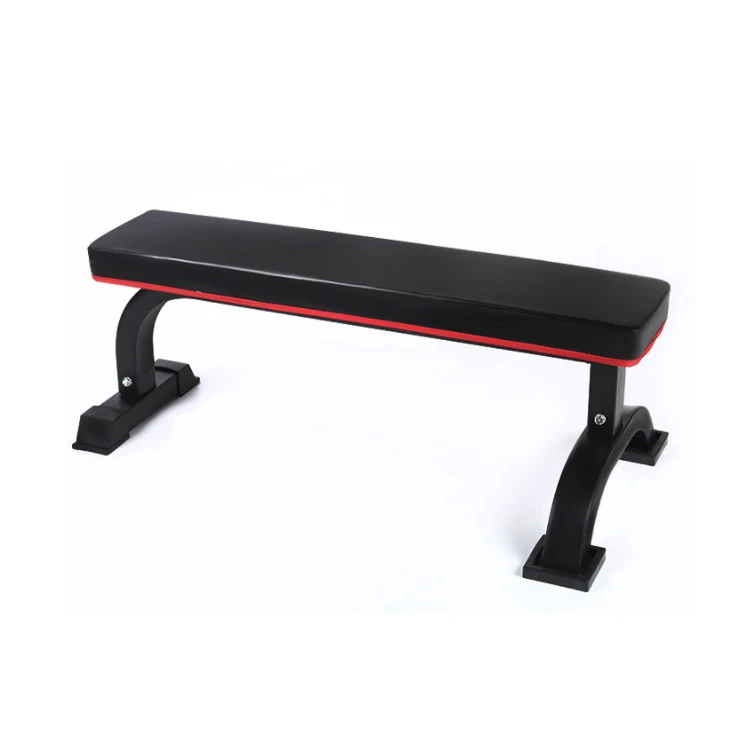
What Should Be The Standard Width of the Bench?
The standard width of a bench used in the gym is a critical factor that directly impacts the comfort, safety, and performance of athletes and fitness enthusiasts. According to my information the appropriate dimensions for a weightlifting bench, especially for flat bench exercises like the bench press, vary slightly.
The standard width of a bench used in the gym typically falls within the range of 29 cm to 32 cm (approximately 11.4 inches to 12.6 inches). Additionally, the height of the bench commonly measures between 42 cm to 45 cm (approximately 16.5 inches to 17.7 inches) from the floor to the top of the bench.
The specific dimensions and relative information for gym benches vary based on the type and purpose of the bench. For instance, weightlifting benches designed for flat bench exercises such as the bench press may have pad dimensions of 51.5″ x 12″, while the gap between bar catches could measure around 44″. Commercial-grade adjustable benches are built to withstand 24/7 use in commercial clubs and gyms, with dimensions such as 66″ L x 23″ W x 35″-50″ H and a seat height of 20″.
It’s important to note that the dimensions and specifications of gym benches may differ based on their intended use, design, and brand. Understanding these measurements is crucial for ensuring the comfort, safety, and effectiveness of workouts in a gym setting.
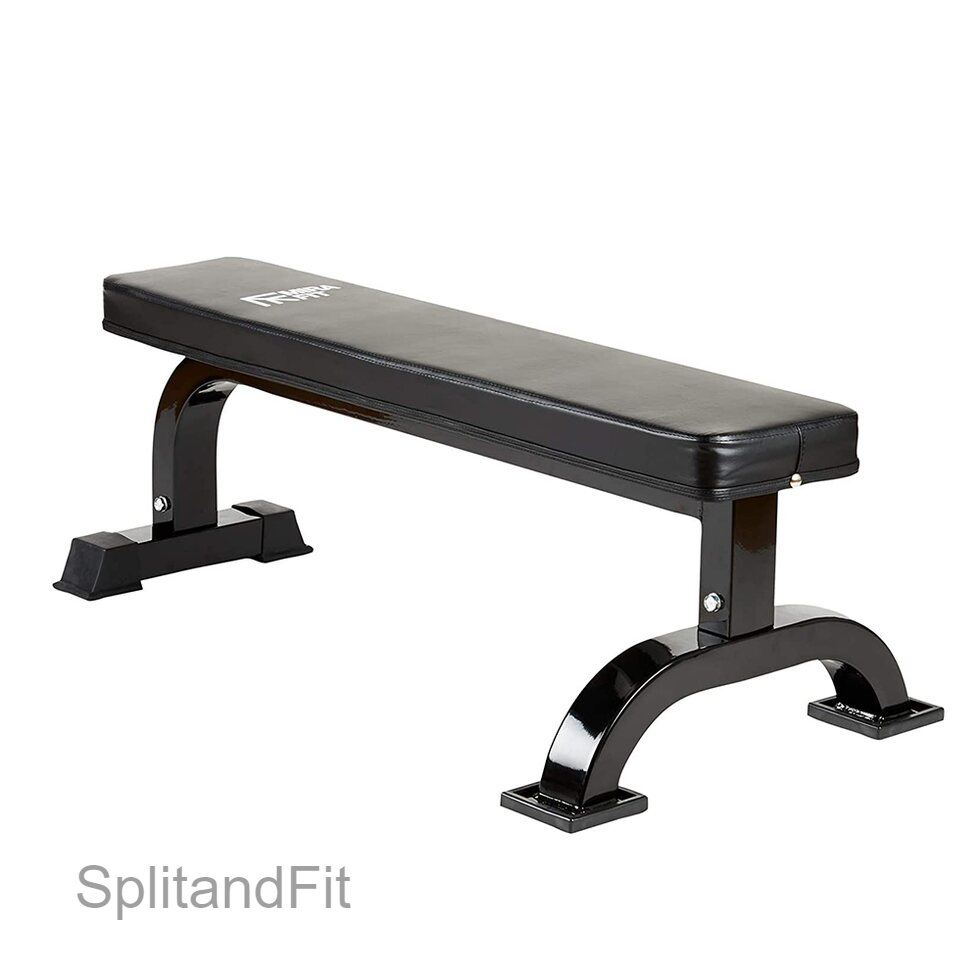
Types of Benches Used in the Gym
The types of weight benches commonly used in the gym include:
Flat Bench: This type of bench provides a stable platform for bench press exercises, allowing for a full range of motion while targeting the chest muscles.
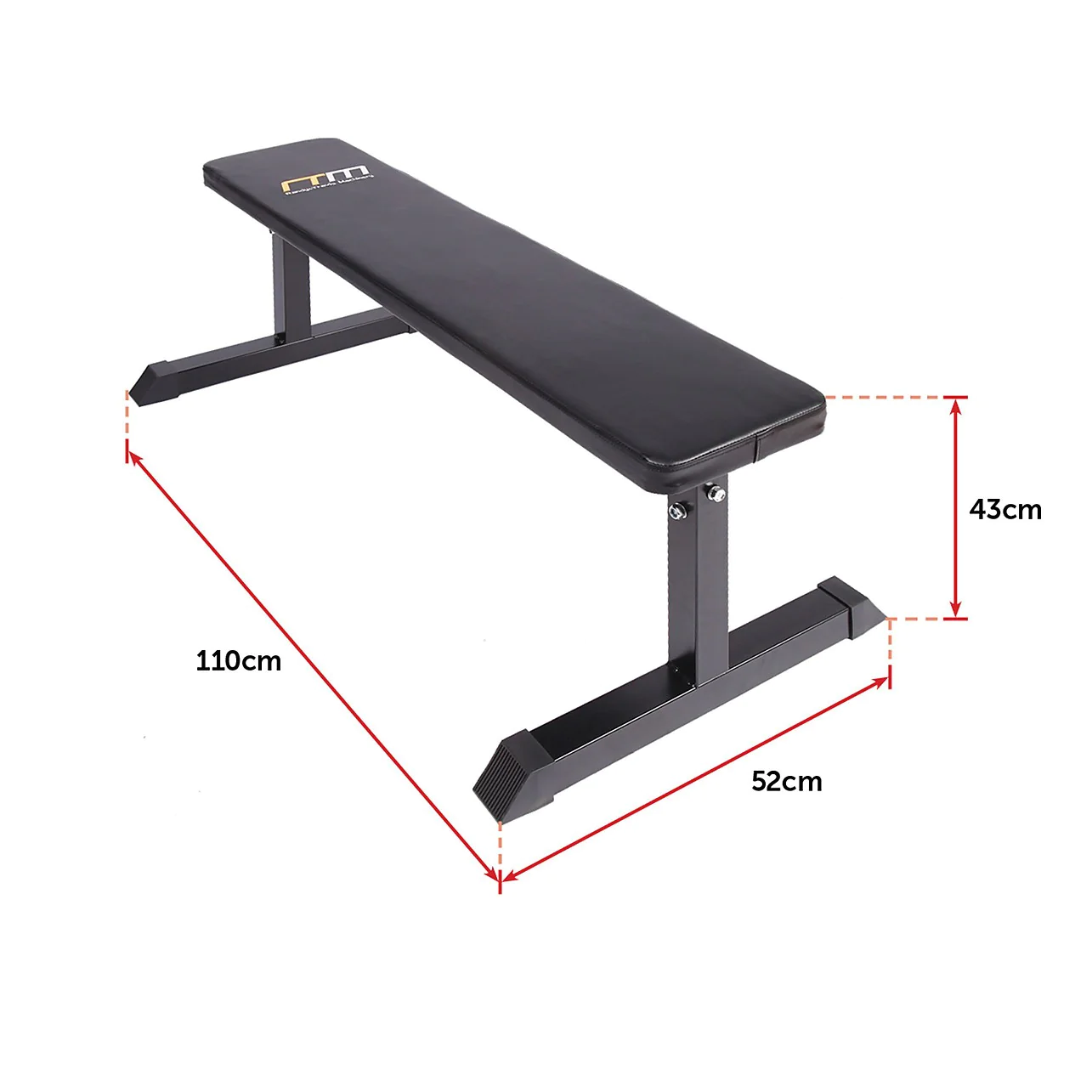
Adjustable Weight Bench: These benches offer the flexibility to incline or decline the bench, enabling users to target different muscle groups during the bench press and other exercises.
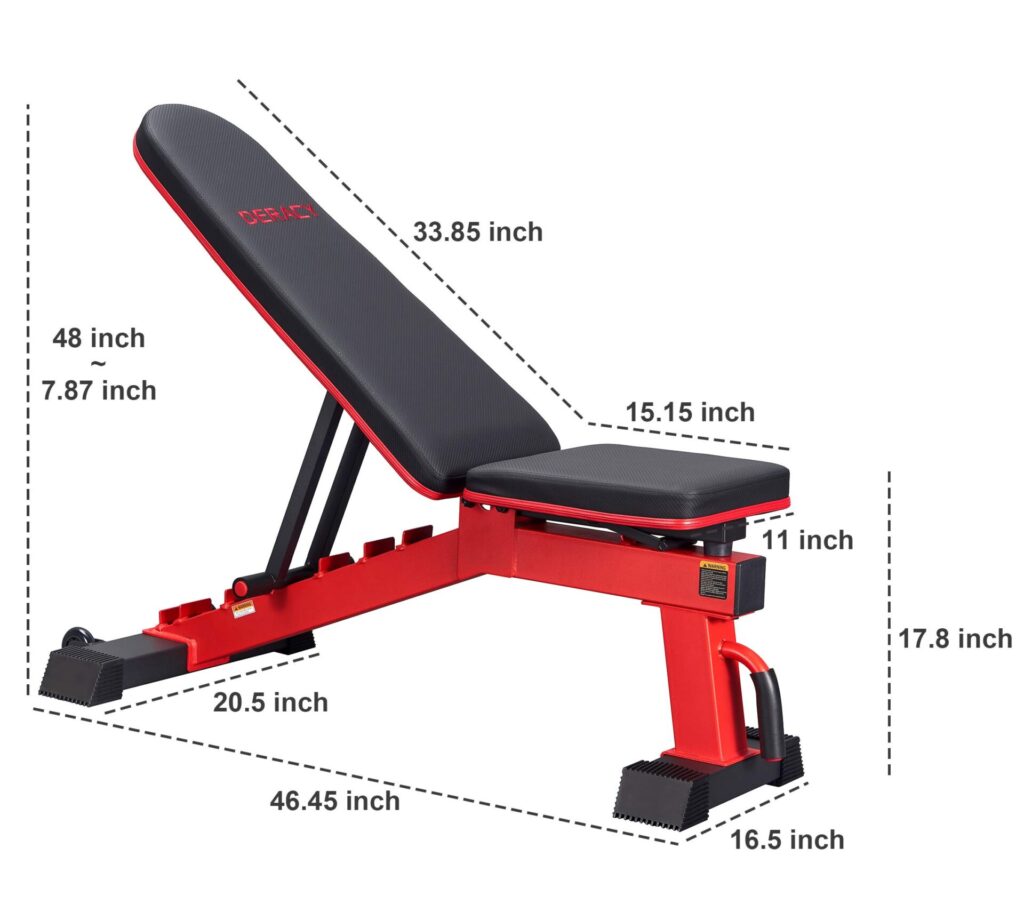
Olympic Weight Bench: Designed to accommodate Olympic-sized barbells, this type of bench is sturdy and suitable for heavy-duty bench press workouts.
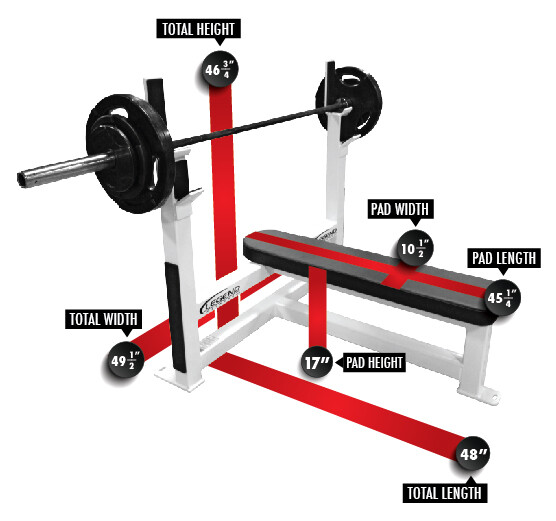
Folding Weight Bench: Ideal for home gyms with limited space, folding weight benches provide a compact yet versatile option for bench press exercises.
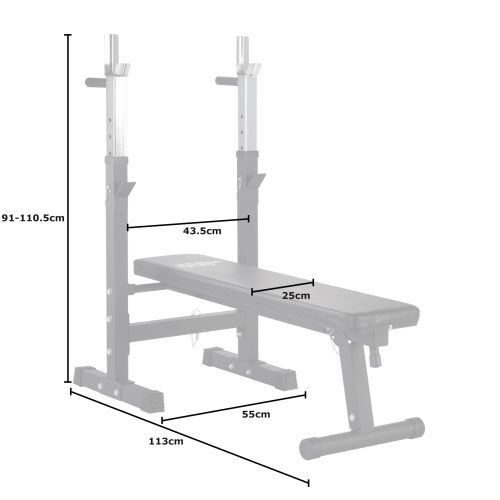
Abdominal Bench: While primarily intended for core exercises, an abdominal bench can also be utilized to support the back during the bench press, promoting proper form and stability.
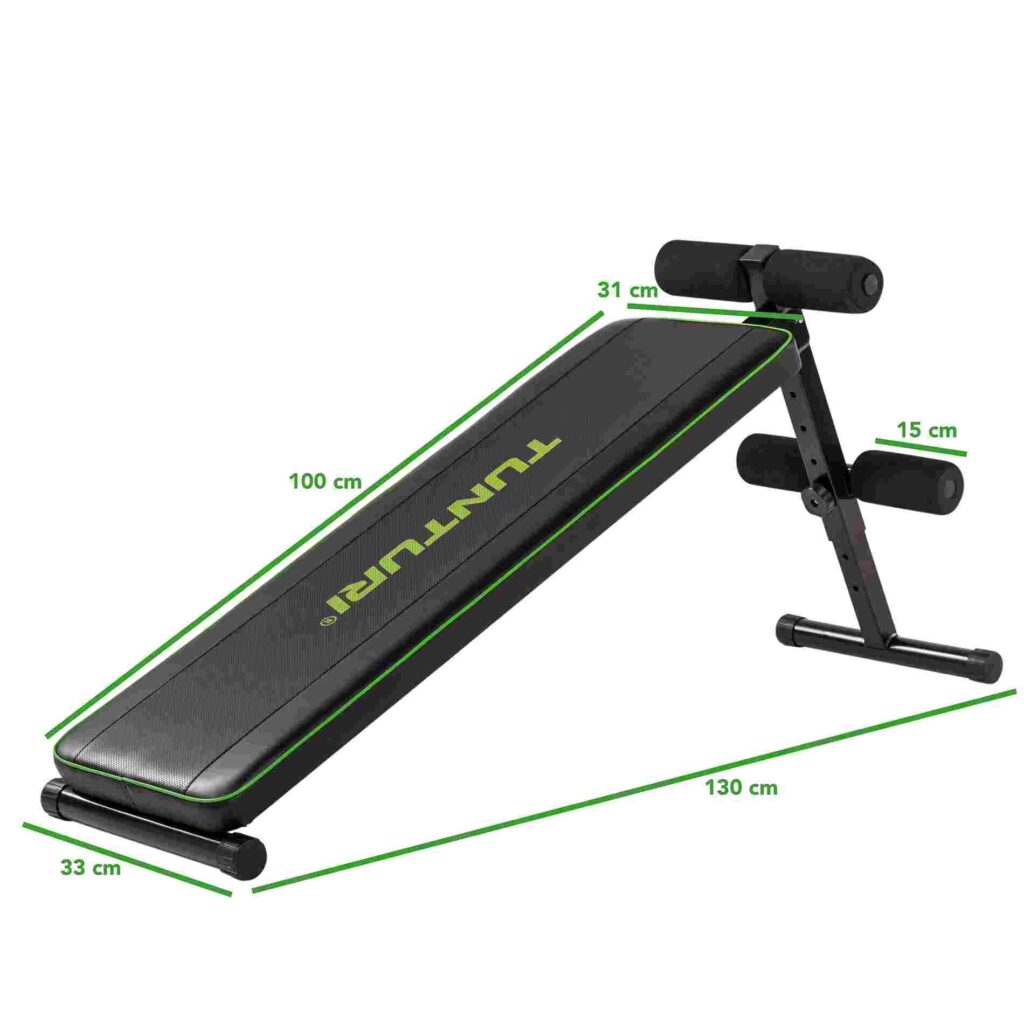
Preacher Curl Bench: Although designed for bicep exercises, the preacher curl bench can also assist in isolating the muscles during the bench press, particularly the triceps.
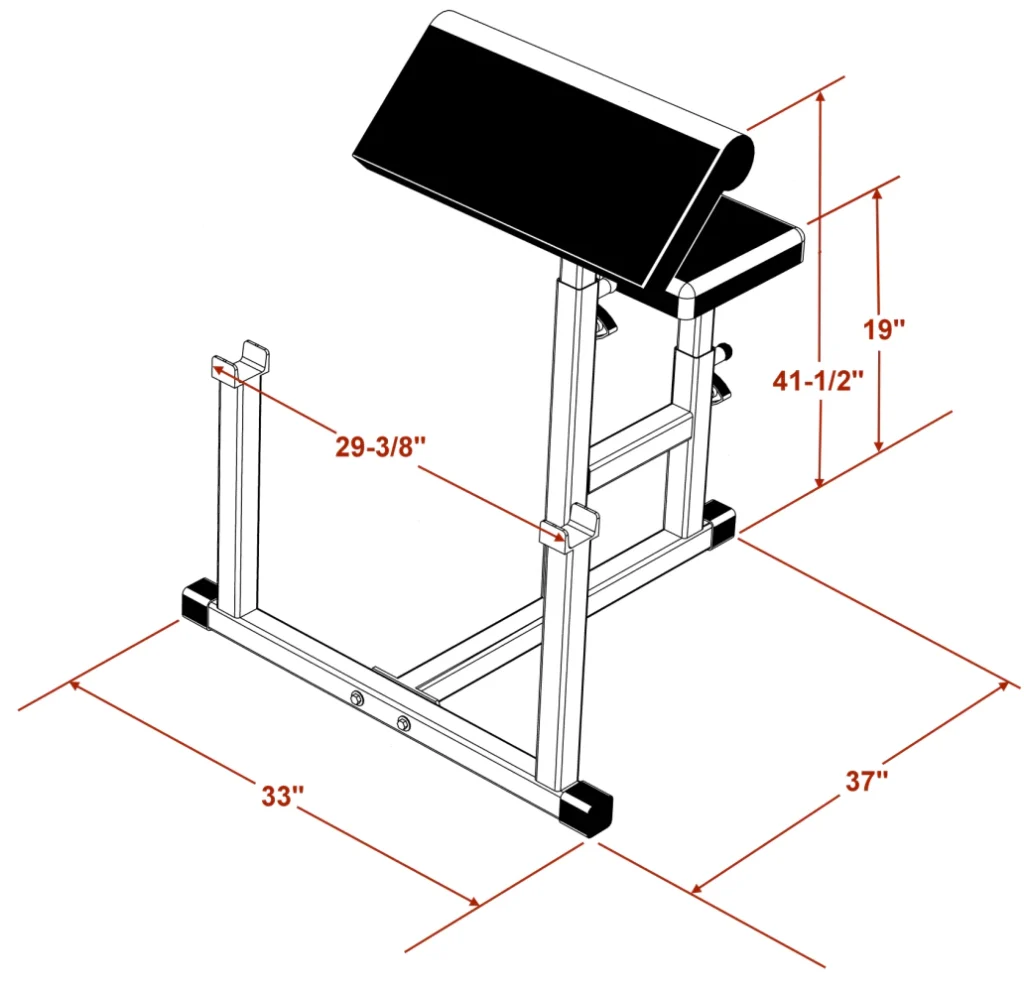
Understanding the different types of weight benches and their suitability for the bench press is crucial for gym owners, fitness enthusiasts, and athletes seeking to optimize their workout experience and performance.
Benefits of Standard Width of Bench Used in the Gym
- Optimal Support and Stability: The standard width bench provides a stable and supportive platform for exercises such as bench press, ensuring proper positioning and shoulder stability during workouts.
- Accommodates a Range of Lifters: The standard width of bench pad caters to a diverse range of users, promoting comfort and alignment for individuals with varying body sizes and shapes.
- Enhances Exercise Effectiveness: By offering a consistent and standardized width, the bench facilitates proper grip widths and body positioning, contributing to effective and safe strength training activities.
- Promotes Proper Alignment: The standard width encourages individuals to set their shoulder blades against the bench, promoting correct alignment and reducing the risk of injury during exercises.
- Versatile for Various Exercises: The standard width of bench accommodates a wide array of exercises beyond bench pressing, making it a versatile and essential piece of equipment in gym settings.
These benefits collectively underscore the significance of the standard width of bench in promoting safety, comfort, and effectiveness in gym workouts.
Frequent Question Answers
| Questions | Answers |
|---|---|
| How wide is a bench supposed to be? | The width of a bench varies depending on its intended use. For example, a bench seat designed for two people typically has a width of 42-52 inches, while a bench seat for three people is approximately 53-80 inches. The length of the bench can range from 42 to 60 inches, and the height of bench seats tends to sit around 16 inches high. |
| What is the best width for a bench press? | The best width for a bench press pad is typically in the range of 11.4 to 12.6 inches (29 cm to 32 cm) for optimal support and stability during the exercise. |
| How wide is a standard bench press bar? | The standard width of an Olympic barbell used for bench pressing is approximately 7 feet, with a grip width ranging from 32 to 36 inches between the inner edges of the knurling. |
| How wide should a bench press pad be? | A bench press pad is typically recommended to be around 11.4 to 12.6 inches (29 cm to 32 cm) wide for comfort and proper support during bench press exercises. |
| Should bench press be wide? | The width of the bench press pad should provide adequate support and stability for the lifter during the exercise. A wider pad can offer more stability, but it should still allow for proper shoulder positioning and range of motion. |
| How thick is a bench pad? | Bench pads commonly range in thickness from 2 to 4 inches, with thicker pads often providing more cushioning and support during exercises such as bench pressing. |
| What is the minimum size for a bench? | The minimum size for a bench depends on its specific use and design; however, a bench seat designed for two people typically has a width of 42-52 inches, and a length ranging from 42 to 60 inches. |
| What is the minimum bench thickness? | The minimum thickness of a bench pad can vary, but it commonly ranges from 2 to 4 inches, with thicker pads offering more cushioning and support during exercises such as bench pressing. |
Conclusion
The standard width of a bench varies based on its intended use and the number of individuals it needs to accommodate. Typically, a bench width falls between 42 and 60 inches, providing comfortable seating for two or more individuals. For example, a bench between 42 and 52 inches in length can seat two adults comfortably, while wider benches ranging from 53 to 80 inches can accommodate more individuals.
Considering the aforementioned sources, it’s evident that the standard width of a bench is crucial for achieving optimal seating comfort and functionality in various settings, including dining areas, public spaces, and furniture design.



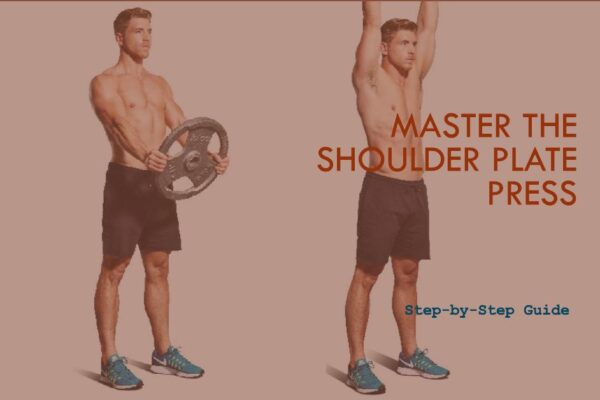


Leave a Reply